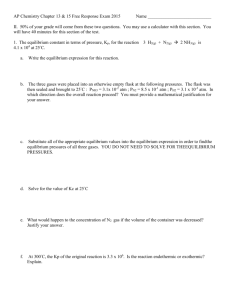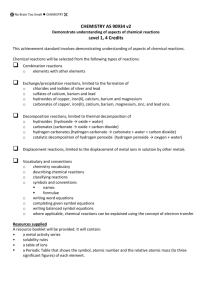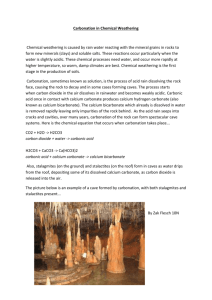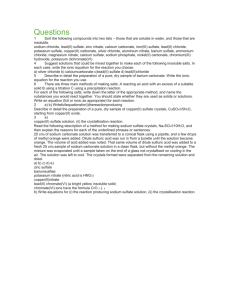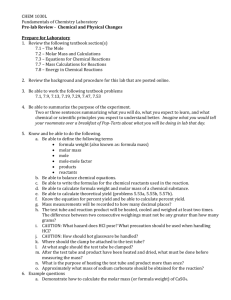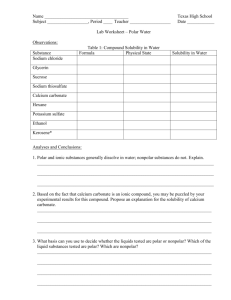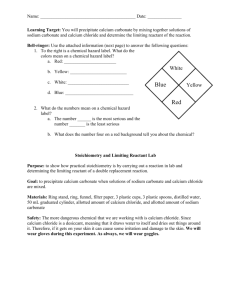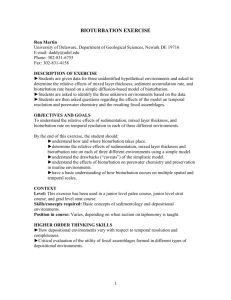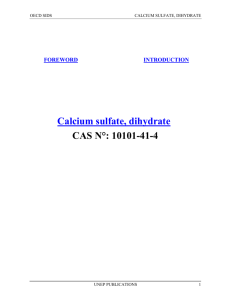bioturbation exercise solutions
advertisement
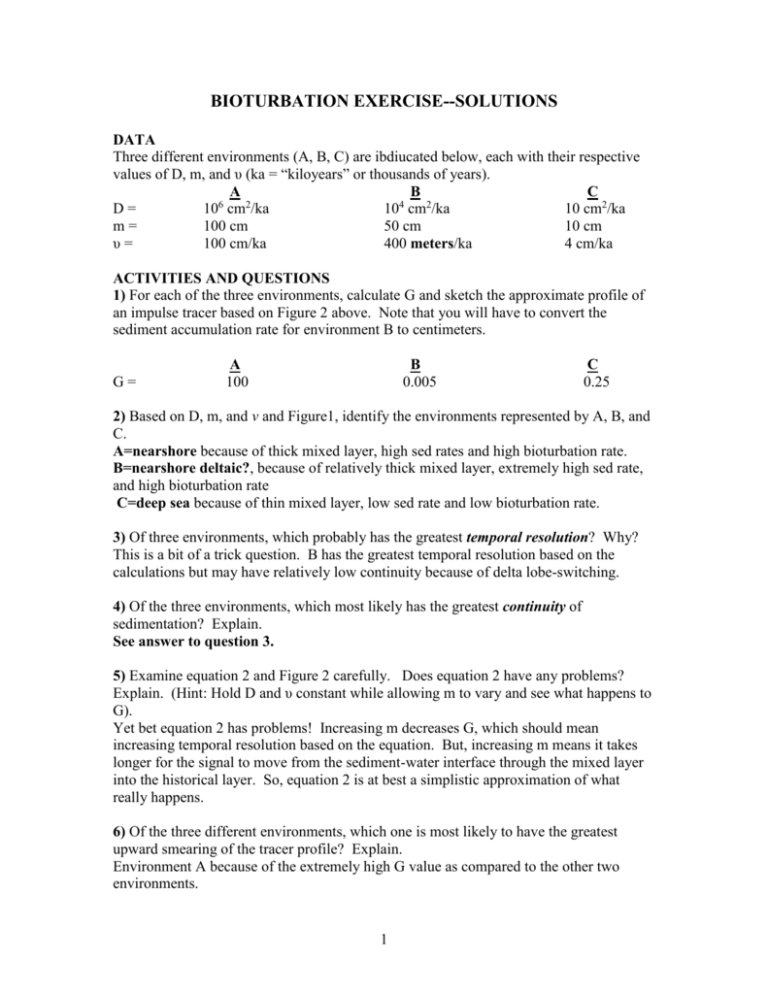
BIOTURBATION EXERCISE--SOLUTIONS DATA Three different environments (A, B, C) are ibdiucated below, each with their respective values of D, m, and υ (ka = “kiloyears” or thousands of years). A B C D= 106 cm2/ka 104 cm2/ka 10 cm2/ka m= 100 cm 50 cm 10 cm υ= 100 cm/ka 400 meters/ka 4 cm/ka ACTIVITIES AND QUESTIONS 1) For each of the three environments, calculate G and sketch the approximate profile of an impulse tracer based on Figure 2 above. Note that you will have to convert the sediment accumulation rate for environment B to centimeters. G= A 100 B 0.005 C 0.25 2) Based on D, m, and v and Figure1, identify the environments represented by A, B, and C. A=nearshore because of thick mixed layer, high sed rates and high bioturbation rate. B=nearshore deltaic?, because of relatively thick mixed layer, extremely high sed rate, and high bioturbation rate C=deep sea because of thin mixed layer, low sed rate and low bioturbation rate. 3) Of three environments, which probably has the greatest temporal resolution? Why? This is a bit of a trick question. B has the greatest temporal resolution based on the calculations but may have relatively low continuity because of delta lobe-switching. 4) Of the three environments, which most likely has the greatest continuity of sedimentation? Explain. See answer to question 3. 5) Examine equation 2 and Figure 2 carefully. Does equation 2 have any problems? Explain. (Hint: Hold D and υ constant while allowing m to vary and see what happens to G). Yet bet equation 2 has problems! Increasing m decreases G, which should mean increasing temporal resolution based on the equation. But, increasing m means it takes longer for the signal to move from the sediment-water interface through the mixed layer into the historical layer. So, equation 2 is at best a simplistic approximation of what really happens. 6) Of the three different environments, which one is most likely to have the greatest upward smearing of the tracer profile? Explain. Environment A because of the extremely high G value as compared to the other two environments. 1 7) Based on your lecture notes, what effect does bioturbation have on each of the following in the marine environment? A) Calcium carbonate dissolution B) Calcium carbonate precipitation C) Bacterial sulfate reduction Give balanced chemical equations in your discussion. Use your lecture notes to answer these particular questions. A) Calcium carbonate dissolution Carbon dioxide released by animal respiration (e.g., burrowers) and the decay of dead organic matter dissolves into the surrounding porewaters to produce carbonic acid: CO2 + H20 →H2CO3. Carbonic acid undergoes dissociation to produce free hydrogen ions (this is why it’s an acid): H2CO3 →H+ + HCO3ֿ HCO3ֿ → H+ + CO3 2-. The hydrogen ions attack shell material: CaCO3 + H+ →Ca2+ + HCO3ֿ B) Calcium carbonate precipitation If the concentrations of calcium and bicarbonate and carbonate ions in porewaters increase sufficiently, calcium carbonate precipitation (“reversed dissolution”) may occur: CaCO3↓ + H+ ← Ca2+ + HCO3ֿ C) Bacterial sulfate reduction Increasing oxygenation may pump sufficient oxygen into the sediment to slow or inhibit bacterial sulfate reduction because these bacteria are “oxyphobic”. Normally, bacterial sulfate reduction increases the alkalinity of porewaters, i.e., the total concentration of dissolved carbon dioxide. These bacteria break down organic matter (“CH2O” in the equations below) using dissolved sulfate (HSO42-)as electron acceptor rather than oxygen, which is used in aerobic respiration. Dissolved sulfate is reduced in the process to hydrogen sulfides, or “rotten egg gas”: Respiration: Sulfate reduction: CH2O + O2 → CO2 + H2O 2CH2O + SO4 2- → HSֿ + HCO3ֿ + H2CO3. 8) The following scenario is real. A modern tidal flat environment was found to have a layer of unconsolidated fine sand (up to ~1 m thick) overlying a very hard, gray-to-black layer with abundant shell fragments. How can such a well-consolidated stratum occur in a modern environment? (Hint: Refer to your answers to question 7) Buildup of calcium and bicarbonate and carbonate ions as a result of dissolution of shells and bacterial sulfate reduction. 2
